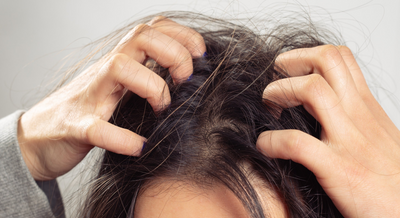Alopecia Areata is a disorder related to immune system malfunction. In this condition, any area on your body, especially on your head, becomes devoid of hair. Small clean bald patches may appear suddenly. There are many other reasons for hair to fall out, but this is easily one of the worst ones. It does not just kill the hair growth on your head but also from other parts of your body. There’s a considerable chance that areas such as your eyebrows and beard may show some symptoms as well. If you are a victim of this disorder and looking for some answers, then you’ve come to the right place. We’ve compiled every piece of information you need to understand and require to deal with this disease.
What are the Causes of this sudden baldness?
To get why it happens, we have to understand the immune system working first. The immune system is a defensive mechanism of your body against hostile invasion of foreign attackers such as viruses. During the external attack, it is the one to destroy those harmful cells. Sometimes, the immune system harms the body itself during the process. And sometimes without any reason. So, an autoimmune disorder is when the immune system acts abnormally and harms the body. During this systemic failure of immunity, hair follicles are attacked. As a result, hair falls out from their roots. If the condition worsens, more bald patches will appear out of nowhere. In the extreme case of Alopecia Areata, there are reportedly two types:
- Alopecia totalis (Complete hair loss from the head)
- Alopecia universalis (Complete hair loss from the patient’s entire body)
According to some health care providers, having stress or depression can cause this type of condition. Hair-loss is indeed traumatizing, and the increased phycological strain can start a chain reaction causing the condition to worsen.
Signs and Symptoms
Whether you are suffering from alopecia or common hair loss, the signs may be
confusing. Let’s find out if you have it or you are just paranoid.
- The sudden appearance of bald patches.
- The shape of these patches may vary, but mostly they are in round shapes. Over time, these patches grow more extensive, and they multiply.
- Regrowth may occur, but after a short while the hair falls off again.
- The bald areas are rarely painful.
- Hair thinning is another common sign of alopecia.
- Hair from anywhere on your body can be affected by it. For example, hair loss may occur on your head, face, chest, etc
- Alopecia can affect your nails. White spots may appear on your fingernails and even on toenails.
- Receding hairline is generally confused with alopecia. Both are unrelated.
- In Alopecia hair will fall from prominent small areas not just from sidelines.
If you can relate to these signs and symptoms, then its bad news. Doctors can easily read the symptoms and identify them. By noticing the rate of hair loss from the affected area, comparative analysis with other parts of the skin and the condition of hair, they can quickly diagnose it. Rarely doctors go for a biopsy when the identification is hard. It is the process in which the doctor takes a direct sample from the affected area and run tests on it.
Does a cure exist?
Even with all the advancements in the medical field, we still have no cure for Alopecia Areata. It is really unfortunate because it is not an uncommon disease. Hopefully, a permanent cure may exist shortly. According to some reports, certain treatments have worked for some patients, but they are not effective universally.
What is the treatment?
The treatment depends upon the severity of hair loss. The more severe the rate of hair loss is the harsher will be the treatment. Mostly, patients with mild alopecia areata recover completely within a year on their own. The hair usually grows back naturally. But it is uncertain whether the condition of the hair will be fully healthy or not. The regrown hair is more likely thinner and weaker. Many treatments are practiced, but none of them have proved to be entirely beneficial. Corticosteroid medicines and creams help regrow the hair. The patient usually applies it directly to the bald area and leaves it. In some cases, it has proved beneficial, but it takes quite some time to work. Steroid injections are the most common treatment here. The very idea of steroids is off-putting for some people, and it should be. The steroid medication is injected in the naked skin to stimulate new hair growth. In comparison to other treatments, it has proved to be the most effective. Other treatments like steroid creams, oral-steroid medicine, and immunosuppressants are also suggested. Uncertainty is there during these treatments. Some patients have shown progress by having one treatment while some others have shown no response to any of them. The primary purpose of these medical procedures is to stimulate the dead hair follicles. The steroid inflicted stimulation may aid the regrowth of hair. These doctors recommended treatments cannot prevent the alopecia condition. They can slow down the hair loss process as long as you are taking medicine. In some cases, it has significantly helped people to grow their hair back.
Facts related to Alopecia Areata
- These facts might help you understand the actual scale of this untreatable disease.
- With no gender discrimination, this disease affects both males and females equally.
- You don’t have to be sick to get this disease. Even if you are healthy with no prior skin disorder, you are still likely to get it.
- It can affect anyone of any age. Most people will notice their first symptoms before the age of 30.
- Children and babies can also get it.
- As it is an immune system related disorder, there is a higher chance of getting other diseases such as allergies, flu, asthma, etc.
- “is it contagious?” it is a common question. The answer is not. So, you can shake hands and hug your bald friends carefreely.
- Genetics do play a role in this. The risk is relatively higher for someone with a family history of this condition or any other autoimmune disorder.











